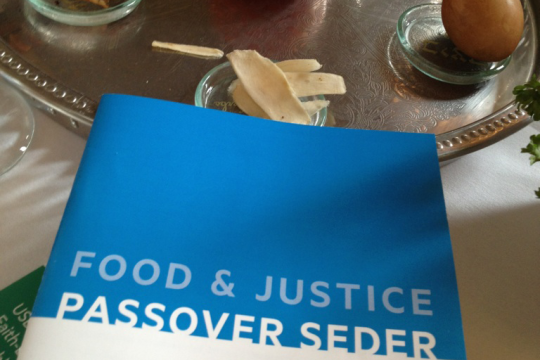
Twenty-first century synagogue life challenges congregations to shift from a program-driven culture to a people-driven culture. One of the biggest barriers to this shift is the way we discuss and measure success. What we measure drives our conversations and thus our behavior.
We need to shift from only considering traditional measures of success (these include attendance, whether we met budget, whether we ran out of food, number of complaints received, and whether staff seemed on-task) to adding measures that go further. These new measures must address the whole of congregational life, and revolve around what matters most to our members. (Watch my video on why this shift needs to happen.)
We need not discard the old measures of success, but in order to stay relevant and to succeed, we must also incorporate and focus on these new measures:
- Relationships: Are we helping congregants build deep relationships with people who will be there for them in difficult times and times of joy?
- Meaning: Are we building meaning by bringing Jewish tradition and wisdom to the challenges our congregants face?
- Impact: Are we having an impact on our congregants and the world around them?
To add these new measures to our toolkit, I propose a five-step process:
1. Define the new measures.
What do relationships, meaning, and impact actually mean? Different congregations will define these measures differently, so figure out what they mean for your community. To do so, talk to members of your congregation, interview congregants, and hold board and committee discussions about these terms. Ask them to finish this sentence: “An event or experience at my congregation is successful to me when ______.” If you immerse yourself in how your community views these measures, you’ll be able to use the vocabulary your congregants are using – which is, in fact, how your membership defines success.
2. Analyze what you currently do.
Once you’ve established your congregation’s definitions of these three measures, think about how your current work stacks up through these lenses. Ask yourself: How would we do if we were measuring Purim or High Holidays by our congregants’ definitions of success? Test congregant-facing events and experiences, as well as back-end processes such as dues policies, new-member onboarding, and committee meetings. If any of these elements don’t seem successful through the lens of congregants’ definitions of success, ask yourself: How could we do things differently?
3. Start talking about new measures.
Begin every board or staff meeting with a 15-minute discussion about your progress in building relationships, creating meaning, and making an impact (according to your members’ definitions). Then, expand this discussion to anyone who runs a program at your congregation. Anyone who has a leadership position or a leadership role needs to embrace these new measures in order for them to truly become your congregational mindset.
These concepts must also be incorporated into non-programmatic and non-administrative interactions at your congregation, such as hallway discussions with congregants or the sentiments in condolence cards. When you take these actions, how are you building a relationship, creating meaning, and making an impact?
4. Test your measurement tools on one area of your congregation.
There are a variety of measurement tools your congregation can use to test its new measurements, including focus groups and surveys. Build your measurement tool based on your membership’s definitions of relationship, meaning, and impact. For example, if your members have defined success in relationship-building as having a strong sense of community beyond congregational events, you could ask questions like: To what extent do you have relationships that extend beyond the walls of the congregation? How many times have you been to other members’ homes for Shabbat dinner?
Don’t tackle all areas of congregational life at once; rather, pick one area to test this tool. Try choosing a specific program (a Purim celebration), demographic group (parents of religious school kids) or office function (new member onboarding).
The frequency of measuring should be tied to the specific area you’re focusing on. You will see that some programs will need to be measured every time they take place, while it makes more sense to measure other programs once a quarter or once a year. When you establish the frequency for these measurements, you should also take into account your staff or lay leadership capacity to assess the data from your measurement tools.
5. Expand your test.
Once you determine how your measurement tool works for your congregation and become comfortable with it, reflect on what you’ve learned and consider the best way to expand your test into another area of your congregation. If you initially tested a program, might it make sense to test another program or to shift your focus to testing a demographic group? Engage in constant reflection as you expand this work to more areas of congregational life.
These new measures of success support the shift to a congregant-driven culture. Going “beyond counting heads” really means shifting the focus from thinking about how many people are showing up at an event to thinking about individual congregants and their relationships with the congregation over time. It means assessing congregants’ patterns of behavior and connecting with them according to their individualized interests.
This isn’t an easy shift, but it is necessary in order for our congregations to continue thriving now and for the generations to come.
To learn more, check out 5 Questions (and Answers!) about New Measures of Congregational Success.
Have something to say about this post? Join the conversation in the Leadership and Governance group in The Tent, the social network for congregational leaders of the Reform Movement. You can also tweet us or tell us how you feel on Facebook.
Related Posts

Passover 2024: The Three Central Messages of Pesach

Modern-Day Plagues of Injustice and Inequality

